
In my last blog entry I mentioned that I’d been reading over some of my past fishing logs. Really interesting reading there (to me, anyway). I read that on this date fifty years ago I fished Crystal Lake in West Peabody, Mass. and caught 53 bluegills and four crappies. All on Wooly Worms, three of which I lost in the trees or on sunken logs (can’t remember why, but I used to keep a record of the number of flies lost also).
Before I went to bed last night, I got to thinking about this lake and the more I thought about it the more I wanted to revisit it, to see if the fishing there was as I remembered it. I fell asleep calling to mind pleasant scenes from fifty years ago: the trail that led off up the hill through the pines and away from the railroad tracks, up up and then down into the damp boggy depressions that seemed always full of skunk cabbage but now and then a lady’s slipper; the fallen trees that lined the edge of the lake and made casting difficult–but not impossible– in most places. And the bluegills, big and fat and full of spunk. Crappies,too.
When I woke up, it seemed the perfect day for bluegill fishing, sunny and warm, with little or no wind. I had some orders to fill but if I could finish them and get to the post office before two I’d have the whole afternoon, the best part of the day.
As it happened I had an order for some Bluegill Gurglers and after tying up them up for a fellow in Indiana I tied some up for myself and by three o’clock I was driving north on Route 1 towards West Peabody and Crystal Lake. I had hitchhiked up this highway many times to fish Crystal Lake but today I couldn’t remember which exit to take and ended up taking the Rte 114 exit, one exit past Lowell Street, which was the right one. I realized my mistake when I crossed the Ipswich River in Middleton. I was tempted to change my plan and fish the Ipswich instead but I had dreamt about bluegills and Crystal Lake all night and I was determined to stick with my original intention. I turned around, got back on Route 1, and this time took the right exit.
Fifty years is a long time. And, as we all know, much can change in fifty years. And so it was with Crystal Lake–or at least the surrounding area. Suburbia had grown up around it. Where there were fields, now there were houses and shopping centers–and much more traffic than back then–and the old railroad tracks had been ripped up. But the lake itself looked the same for the most part–although slightly smaller than I’d remembered–and as I pulled on my waders, I was happy to see bluegills swirling in the shallows, probably on their spawning beds. It was a good sign.
I walked a short way through some bushes and made my way out onto a ridge that I remembered from long ago, back when it was mostly gravel but now mostly mud and silt, and made my first cast to the edge of some lily pads. I let the fly settle, twitched it once, and was soon into the first of many bluegills, all about the size of my hand and all very fat. Almost every cast was rewarded with a fish and after catching thirty or so, I decided to try another spot. Not that this wasn’t a good spot; it was, but I was eager to revisit some of my other favorite spots along the farther shore.
I waded back to shore and then took off up and over the hill to where there were some down-fallen trees in the water. I would guess that these weren’t the same trees but they seemed to be in the same spot where I used to catch a lot of crappies and so I tossed the little Gurgler out into the water along the edge of the trees hoping that some crappies still lived there. Sure enough, they did. I caught seven on seven casts before they finally quit (or maybe there were only seven there). They weren’t large, maybe a quarter-pound or so–but they were fun. And it had been a long time since I had even seen a crappie.
The shoreline was more brushy and timber-strewn than I’d remembered but it was possible to wade out a bit away from the shore and if I was careful I could cast parallel to the shore or with a roll cast hit some of the lily pads out toward the middle. As I edged my way along the shore I noticed some fish movement beneath some overhanging bushes, movement that looked to be made by a fish larger than the bluegills and crappies I’d been catching. Turned out it was. A largemouth bass, about three pounds, a beauty! What a surprise! I had never caught one in this lake when I was a kid. Maybe they were there but you couldn’t prove it by me. Working my way along this part of the shoreline I picked up three more by flicking my Gurgler in and under the overhanging brush.
By now the sun was beginning to set and I was getting tired from all the sloshing through mud and tiptoeing around and over fallen trees and branches and decided to call it a day. And what a day it was, even better than it was fifty years ago. My total for the day was– I still keep count and still keep records–was 77 bluegills, 4 bass, and 7 crappies. All on the Bluegill Gurgler. I lost three flies to trees. But found some old memories. And created a few new ones to recall. Can’t ask more of a day than that.
 Despite my best intentions, I’ve been a bit remiss in my blog entries lately. May was an exceptionally busy month for fly orders and I spent a lot of my days tying up a storm and rewarding myself at the end of the day with a few hours of fishing whenever the weather allowed it (it was a very windy, cold month of May and early June wasn’t much better). And at the end of each day I was often much too tired to sit down at the computer and think of something interesting to write about. I did, however, take the time to keep my fishing log up-to-date and tonight–after a great day of striper fishing in the inner harbor–the thought occurred to me that this fishing log might be of interest to some of my readers. And here it is: my log (somewhat abbreviated) for the past three weeks. Hope you find it interesting.
Despite my best intentions, I’ve been a bit remiss in my blog entries lately. May was an exceptionally busy month for fly orders and I spent a lot of my days tying up a storm and rewarding myself at the end of the day with a few hours of fishing whenever the weather allowed it (it was a very windy, cold month of May and early June wasn’t much better). And at the end of each day I was often much too tired to sit down at the computer and think of something interesting to write about. I did, however, take the time to keep my fishing log up-to-date and tonight–after a great day of striper fishing in the inner harbor–the thought occurred to me that this fishing log might be of interest to some of my readers. And here it is: my log (somewhat abbreviated) for the past three weeks. Hope you find it interesting.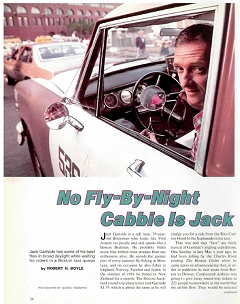 A Blast from the Past!
A Blast from the Past!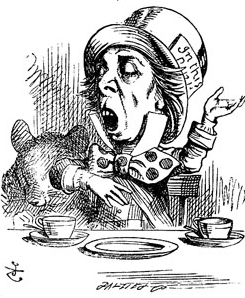 The striper fishing along the shores of the inner harbor in Winthrop has slowed down a bit over the past few days, probably because of the offshore storms, which have really roiled up the water in some places and have made the outside shore relatively unfishable unless you can cast a flyrod
The striper fishing along the shores of the inner harbor in Winthrop has slowed down a bit over the past few days, probably because of the offshore storms, which have really roiled up the water in some places and have made the outside shore relatively unfishable unless you can cast a flyrod

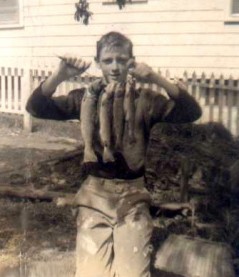 While biding my time and counting down the days until the stripers return–within the week now, I reckon–I decided to flip through the pages of some of my past fishing logs tonight, to see if the past held anything in store for me, so to speak.
While biding my time and counting down the days until the stripers return–within the week now, I reckon–I decided to flip through the pages of some of my past fishing logs tonight, to see if the past held anything in store for me, so to speak.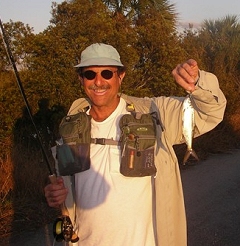 Most fishing web sites are full of pictures of people holding up large fish that they caught. After awhile the fish in these pictures all look the same.
Most fishing web sites are full of pictures of people holding up large fish that they caught. After awhile the fish in these pictures all look the same.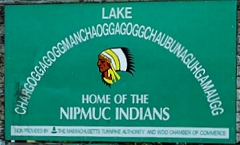 Listening to a radio program tonight while tying flies, I heard a voice (two actually) from out of the past. It was Ethel Merman and Ray Bolger singing a song about a lake in western Massachusetts that I hadn’t heard in over fifty years but which was one I enjoyed singing when I was a kid. A song with the simple but tongue-twisting title of “Chargoggagoggmanchauggagoggchaubunagungamaugg.” (In case you’re wondering, yes, I did have to look up the proper spelling). Just repeating this word over and over used to drive my parents crazy–which is probably one reason why I liked the song so much.
Listening to a radio program tonight while tying flies, I heard a voice (two actually) from out of the past. It was Ethel Merman and Ray Bolger singing a song about a lake in western Massachusetts that I hadn’t heard in over fifty years but which was one I enjoyed singing when I was a kid. A song with the simple but tongue-twisting title of “Chargoggagoggmanchauggagoggchaubunagungamaugg.” (In case you’re wondering, yes, I did have to look up the proper spelling). Just repeating this word over and over used to drive my parents crazy–which is probably one reason why I liked the song so much. Our friend and neighbor
Our friend and neighbor 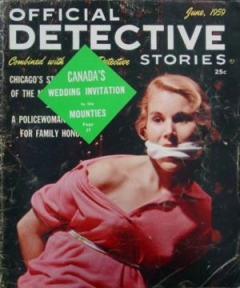 In the current Pointless Poll (see the
In the current Pointless Poll (see the